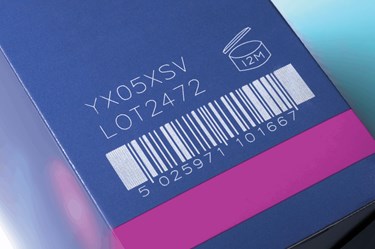How Barcodes Are Becoming Increasingly Important In Today's e-Commerce Driven World

In an industry that demands efficiency and streamlined costs, the barcode is truly the king of all labelling systems.
By John Tierney, Marketing Director, Linx Global
Technology advances rapidly in the modern world with commercial demand serving as one of the biggest drivers of innovation. You may think, therefore, barcodes are dying out. In fact, the opposite is true — the need for barcodes has never been higher.
The Search For Improved Profitability
We are moving into a world where conventional brick and mortar retail is rapidly losing ground to e-Commerce sites like Amazon and eBay. Every year, figures are released demonstrating a rise in online buying behaviors across all demographics, and behind this movement is an army of distributors, warehouse companies, just-in-time inventory specialists, and logistics masters.
In such a demanding and competitive arena, the smallest of margins are amplified by the sheer volume of sales. Barcodes still reign supreme in this marketplace for a number of reasons, but primarily because they are simply far more cost effective than conventional labelling.
Industrial printers allow for single strip codes to be printed directly onto product packaging, using a minimal amount of material to help keep costs down. This allows larger e-Commerce operations to run their own proprietary systems, delivering an extra level of management and control whilst moving and storing items.
Labels Or Print Directly?
Labels that use human language will only work in a limited number of locations and with most stock control systems now managed by computers, human recognition is not only irrelevant, it is also the process point with the greatest potential for errors.
Many businesses now use bespoke barcodes for their own stock control systems as they are versatile enough to be used to be used for all kinds of consignment and even equipment labelling. For instance, every piece of stock control hardware can be logged into and out of the storage area of an e-Commerce business, reducing loss and saving time on searching for equipment.
Although barcoding may require an initial investment for an e-Commerce business, the most significant reduction in costs is through money saved on errors in shipping, packing, and manual input.
Barcodes applied directly to the product instead of labels will save the manufacturer on label costs and ensure the code stays in place during the product’s lifetime — important for applications such as extruded PVC pipes, electrical fittings such as plug sockets, and even wooden mouldings. Several barcodes may need to be applied to the product; for example, one for internal traceability/stock control, and one for point of sale, so using a direct method of printing such as Continuous Ink Jet or laser will save on labelling costs.
Barcodes applied to secondary packaging need to be high resolution to ensure they can be read electronically, so the more recent generation of large character printers are more suited as they can reproduce images, including 2d codes, at resolutions of 180dpi.
An Economy Of Information
In more recent years we have seen the rise of the data matrix code which can include variable data. One example of this would be the popular QR code. For a time, almost every piece of marketing collateral or off the shelf product contained one of these square cyphers. Providing a substantially greater amount of information than the standard stripe barcodes, these have vast applications in the electronics industry.
Electronic components often have a restricted amount of space for labelling. With data matrix codes able to contain over 2,000 characters, these 2-dimensional codes offer businesses a number of benefits over conventional labelling. Enabling e-Commerce operations to condense complex information into a compact area, and to identify original manufacturer parts, this is the ideal system for labelling electronics components such as processor upgrades and RAM
Enabling Buyer Behavior
Barcodes not only aid the e-Commerce vendors, but are also removing friction from the buyer experience for buyers. Consumers can now download apps that allow the scanning of items and products to permit easy ordering. As an example, anyone with a smartphone can simply scan the barcode off the back of a product and an app will find them the exact same item on the site, saving the buyer time in identifying the right product and speeding up the purchase process — clearly a benefit for suppliers.
In Conclusion
English is not the universal language of e-Commerce. Our market driven world uses the alphabet of the barcode to effortlessly power the physical side of millions of internet-enabled transactions on a daily basis. Without such a system efficiency would rapidly drop with longer delivery times and costs would skyrocket.
